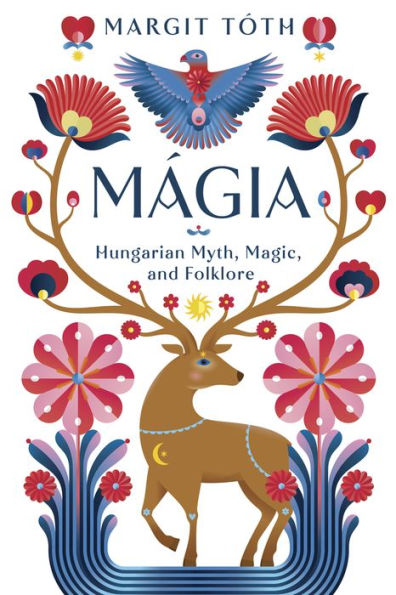Margit Toth has written a fascinating introduction to a whole magical culture and set of folklore new to me and it’s really interesting! The Hungarians were recent arrivals to Europe, migrating from central Asia into the centre of the Carpathian plains about 1200 years ago. They speak Magyar, a language that is only related to Finnish in Europe. Their folklore draws from a different well of primeval mythology and customs from the Indo-Europeans of the rest of Europe. Their folk religion lore and magic are influenced strongly by Christianity, but with customs and ideas that predate Christianity and persist to the present (although barely so – modernization, urbanization, and the Soviet occupation did a great deal to destroy their traditions, and they are still being rediscovered and rebuilt).
First a note on her sources – she is drawing from substantially Magyar language sources, principally academic journals and publishers. She makes a disclaimer at the start disavowing the racist and nationalist groups that have arisen in Hungary that use some of the stories and symbolism she talks about (rather like the racist Odinist perversions of the Norse mythology), and warning readers that some pre-modern stories will be disturbing to our sensibilities but that she will not be bowdlerizing her source material (although I did not find anything particularly challenging in that regard).
She does not simplify the material she’s telling us, making clear that there are a number of ethnicities in Hungary and no single mythology for all of them, although there were broadly shared beliefs and folk observances and customs, patterns and overarching themes.
The book is divided into five sections, each with several chapters:
- Mythology (world of spirits- creation story, outline of deities and possible origins, Christian rebranding of deities as saints, persistence of goddess; religious practice – sacrifice, taboo, the afterlife; spirits of the skies – sun, moon, wind, rain, rainbows, thunder and lightning; fairies and nature spirits – a range of different type of spirits of place; Rosszak – malevolent spirits of various sorts, often with both helpful and harmful aspects; sacred animals- dogs, birds, bees, ladybugs, frogs and toads, dragons).
- Daily Life (folklore of village life, homesteads with a great deal of domestic magic, sacred food and drink especially bread, apples, milk, alcohol). She includes descriptions of daily life in the village, communal ritual and festival celebrations, shared work and courtship customs.
- Magic (witches, other magical people, magical techniques, talismans, divination, healing). She is talking here of the folkloric witch – an evil-doing person – not the neo-Pagan or Wiccan reframing. The shamanic traditions of the steppes came to Hungary as the Magyars migrated westward and taltos, seers, werewolves were also magical people.
Yearly Celebrations (seasonal holidays, Christian holidays and folklore – Easter and Advent, Christmas). - Rites of Passage (coming of age, love and marriage, pregnancy and childbirth, postpartum and infancy – protection from curses, blessings on mother and infant, baptism, changelings, death customs including apologizing to a dying person so they will not revenge after death).
There are similarities to folk customs and magical practices from other Eastern European cultures, ideas that the Hungarians picked up as they travelled or incorporated from peoples living alongside them. And the broad outlines of family and community practices were familiar, but the specifics and details are what made these Hungarian.
In a single survey text, even one of almost 400 pages, it’s impossible to give more than a taste of the folklore of a whole culture. I am left intrigued and interested. This book is well-researched and written. I thoroughly enjoyed her clear description and style, thought that she chose examples well, and I am very pleased to recommend her work to anyone interested in expanding their folklore or magical reading outside of the usual sources.
I would be remiss if I didn’t at least mention the charming illustrations by Aniko Kutas-Czinege which added a delightful and playful element to the text.
~ review by Samuel Wagar
Author: Margit Toth
Llewellyn Publications, 2024
384 pg. Paperback £19 / $34 Can / $25 US

